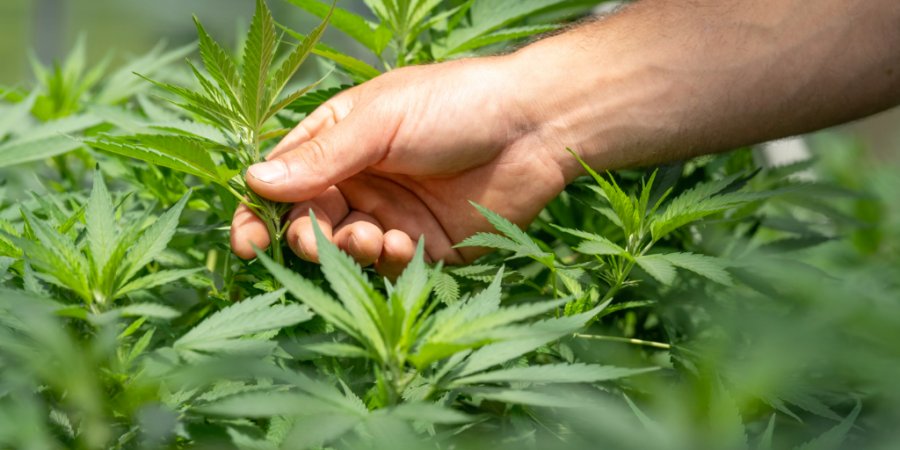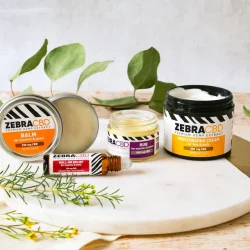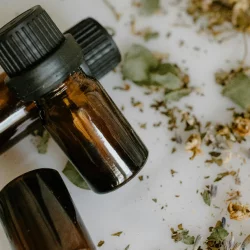How to Avoid Overwatering Cannabis Plants

Overwatering is one of the most common mistakes made by new cannabis growers. While cannabis plants need sufficient water to thrive, too much water can quickly lead to root rot, mold, and other problems. In this comprehensive post, we'll look at the signs of overwatering, examine what causes it, discuss how to prevent it, and detail what to do if you suspect you have an overwatered cannabis plant.
What Causes Overwatering in Cannabis Plants?
Before jumping into the signs and solutions, it's important to understand what leads to overwatering in the first place. There are a few key factors that can cause well-intentioned growers to underwater their cannabis plants:
Using Too Large a Container
One of the most common reasons for overwatering is when the pot or container used is too large relative to the size of the plant's root system. This leaves too much empty space around the roots for water to pool up in. All this excess moisture prevents the roots from getting the air circulation they need to stay healthy.
As a general rule, the container should be no more than twice the width of the plant. Anything much bigger means the roots won't be able to soak up all the water before it goes bad. For young plants just a few weeks old, start them in very small containers or pots like Solo cups before moving them to something bigger.
Watering Too Frequently
It's easy, especially for new growers, to get into the habit of watering cannabis plants too often. You may think you are doing your plants a favor by watering them every day or even multiple times a day. But in reality, this frequent watering quickly leads to oversaturation.
Cannabis plants do not need to be watered daily. In fact, just the opposite is true. Watering once every two to three days is typically sufficient in the vegetative stage. During flowering, they may need water only once every four or five days. Always let the top few inches of soil dry out before adding more water.
Using a Growing Medium with Poor Drainage
Another factor that encourages overwatering is when the growing medium doesn't drain well. Some types of soil mixtures have the tendency to stay wet for too long. Heavy soils with too much peat or not enough perlite are prone to remaining soggy after watering.
Always make sure your cannabis plants are grown in a porous medium that drains easily. Soilless mixes are ideal, as are soil mixes amended with perlite or pumice. Drainage is so important that it's better to underwater plants growing in dense soil rather than risk overwatering.
High Ambient Humidity
The conditions of the grow area also influence how quickly excess water can evaporate. If the ambient humidity is very high, it will take longer for the soil to dry out sufficiently between waterings. Combine high humidity with frequent watering, and overwatering is inevitable.
Use exhaust fans and dehumidifiers as needed to keep humidity during the grow season between 40-60%. Monitor with a hygrometer and adjust equipment to maintain ideal humidity ranges. Proper air circulation is key to preventing overwatering issues.
Recognizing the Signs of Overwatered Cannabis Plants
Catching the early signs of cannabis overwatering gives you the best chance of correcting the problem before serious damage sets in. Be on the lookout for these common symptoms:
Drooping or Dropping Leaves
One of the first visible indicators of an overwatered cannabis plant is leaves that are drooping, sagging, or pointing down. The plant will look like it's wilting. The excess moisture damages the root system so it can't take up water like normal, causing the leaves to droop.
Yellowing Older Leaves
Lower leaves on the plant may start to turn yellow as the roots struggle and begin to die off from all the excess moisture around them. Without a healthy root system, the plant can't take up nutrients properly and older leaves show signs of deficiencies.
Mold or Root Rot
Examine the soil surface and stems closely under good lighting. Do you notice any white fuzzy mold starting to grow? This white powdery mildew is a surefire sign the plant has been overwatered. Also check that the roots are still mostly white and firm - black, mushy roots indicate advanced root rot.
Slow or Stunted Growth
Too much water limits air circulation to the roots, impacting their ability to take up nutrients needed for growth. An overwatered plant will exhibit slow growth and just look unhealthy overall. Leaves may be small and pale.
Preventing Overwatering of Cannabis Plants
Now that you know what causes overwatering and can recognize the common signs, let's discuss preventative steps to avoid overwatering your cannabis in the first place:
- Allow the top inch or two of soil to dry out between waterings. Use your finger to probe the soil moisture.
- Water less frequently when plants are young or in cool weather when growing slowly.
- Make sure containers and pots have ample drainage holes in the bottom so excess water can easily escape.
- Amend dense soil by adding perlite, coco coir, or pumice to improve drainage.
- Use fabric pots that promote excellent drainage and aeration over plastic pots.
- Choose an appropriately sized pot - don't go too big if plant is small.
- Use oscillating fans to circulate air around plants if humidity is high.
- Water below the leaves, not from overhead, to keep foliage dry.
- Lift pots regularly to get a feel for how heavy they are when wet vs. when dry.
- Invest in a soil moisture probe to take the guesswork out of deciding when to water.
Correcting an Overwatered Cannabis Plant
If you catch the overwatering early enough, the plant may fully recover. Here are the steps to take:
- Immediately stop watering and allow the plant to dry out completely before resuming watering at the proper schedule.
- Move the potted plant to a warm, well-ventilated area to facilitate moisture evaporating from the soil.
- Gently remove the plant and inspect the roots - trim off any roots that are brown, black, or mushy.
- Repot into properly amended soil focused on improving drainage.
- Use fans directly blowing over the foliage to speed up drying.
- Add a dehumidifier to the grow area to keep humidity levels low.
- Monitor the plant closely for signs of new growth as it recovers over the next few weeks.
Don't lose hope if overwatering strikes your cannabis garden. Just focus on letting the plant dry out as quickly as possible. Remove any dead roots and repot into fast draining soil. Resume a sparse watering schedule, allowing the medium to fully dry out between waterings. With quick corrective action, even severely overwatered plants often make a full recovery.
Just remember that it's much harder to fix an overwatered plant than one that is underwatered. When in doubt, err on the side of caution and let the plant get quite dry before watering again. Following proper watering techniques from the start minimizes issues with overwatering. Pay close attention to signs of excess moisture and take corrective action quickly if needed. Careful monitoring of soil moisture and humidity levels will keep your cannabis plants happy and thriving.
More to Read:
Previous Posts:





